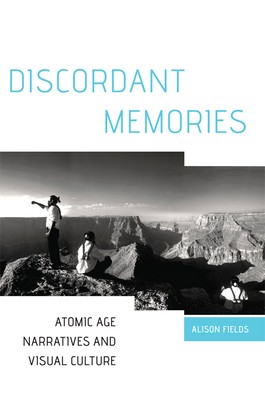
- We will send in 10–14 business days.
- Author: Alison Fields
- Publisher: University of Oklahoma Press
- ISBN-10: 080616459X
- ISBN-13: 9780806164595
- Format: 15.8 x 23.4 x 2.3 cm, hardcover
- Language: English
- SAVE -10% with code: EXTRA
Reviews
Description
On two separate days in August 1945, the United States dropped atomic bombs over the Japanese cities of Hiroshima and Nagasaki. As the seventy-fifth anniversary of these cataclysmic bombings draws near, American and Japanese citizens are seeking new ways to memorialize these events for future generations. In Discordant Memories, Alison Fields explores--through the lenses of multiple disciplines--ongoing memories of the two bombings. Enhanced by striking color and black-and-white images, this book is an innovative contribution to the evolving fields of memory studies and nuclear humanities. To reveal the layered complexities of nuclear remembrance, Fields analyzes photography, film, and artworks; offers close readings of media and testimonial accounts; traces site visits to atomic museums in New Mexico and Japan; and features artists who give visual form to evolving memories. According to Fields, such expressions of memory both inspire group healing and expose struggles with past trauma. Visual forms of remembrance--such as science museums, peace memorials, photographs, and even scars on human bodies--serve to contain or manage painful memories. And yet, the author claims, distinct cultures lay claim to vastly different remembrances of nuclear history. Fields analyzes a range of case studies to uncover these discordant memories and to trace the legacies of nuclear weapons production and testing. Her subjects include the Bradbury Science Museum in Los Alamos, New Mexico; the Hiroshima Peace Memorial Museum in Japan; the atomic photography of Carole Gallagher and Patrick Nagatani; and artworks and experimental films by Will Wilson and Nanobah Becker. In the end, Fields argues, the trauma caused by nuclear weapons can never be fully contained. For this reason, commemorations of their effects are often incomplete and insufficient. Differences between individual memories and public accounts are also important to recognize. Discordant Memories illuminates such disparate memories in all their rich complexity.
EXTRA 10 % discount with code: EXTRA
The promotion ends in 18d.14:16:11
The discount code is valid when purchasing from 10 €. Discounts do not stack.
- Author: Alison Fields
- Publisher: University of Oklahoma Press
- ISBN-10: 080616459X
- ISBN-13: 9780806164595
- Format: 15.8 x 23.4 x 2.3 cm, hardcover
- Language: English English
On two separate days in August 1945, the United States dropped atomic bombs over the Japanese cities of Hiroshima and Nagasaki. As the seventy-fifth anniversary of these cataclysmic bombings draws near, American and Japanese citizens are seeking new ways to memorialize these events for future generations. In Discordant Memories, Alison Fields explores--through the lenses of multiple disciplines--ongoing memories of the two bombings. Enhanced by striking color and black-and-white images, this book is an innovative contribution to the evolving fields of memory studies and nuclear humanities. To reveal the layered complexities of nuclear remembrance, Fields analyzes photography, film, and artworks; offers close readings of media and testimonial accounts; traces site visits to atomic museums in New Mexico and Japan; and features artists who give visual form to evolving memories. According to Fields, such expressions of memory both inspire group healing and expose struggles with past trauma. Visual forms of remembrance--such as science museums, peace memorials, photographs, and even scars on human bodies--serve to contain or manage painful memories. And yet, the author claims, distinct cultures lay claim to vastly different remembrances of nuclear history. Fields analyzes a range of case studies to uncover these discordant memories and to trace the legacies of nuclear weapons production and testing. Her subjects include the Bradbury Science Museum in Los Alamos, New Mexico; the Hiroshima Peace Memorial Museum in Japan; the atomic photography of Carole Gallagher and Patrick Nagatani; and artworks and experimental films by Will Wilson and Nanobah Becker. In the end, Fields argues, the trauma caused by nuclear weapons can never be fully contained. For this reason, commemorations of their effects are often incomplete and insufficient. Differences between individual memories and public accounts are also important to recognize. Discordant Memories illuminates such disparate memories in all their rich complexity.


Reviews